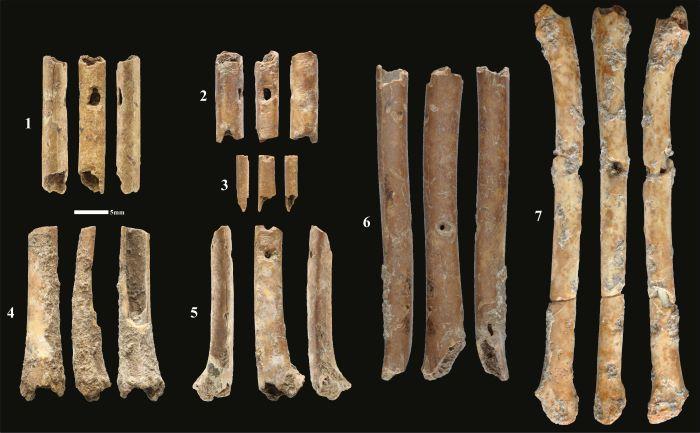Ancient souls we recollect,
crude tools in hand
roughened faces
primitive lives.
Yet beneath our projections
ghosts of music
dance like fleeting dreams,
an echo of melodies
carved from
hollowed bone
to lie in stillness
beneath
the stifling dirt.
Exhumations
reset the tone –
a broken window
to melodic
misheard pasts
where roughened faces
tame the air,
flattering birds
luring game
and
trading worlds.
Distant voices
in the wind
revel once more
in song.

This poem is inspired by recent research, which has found evidence of the first prehistoric wind instruments.
When we think about the Stone Age, or the ‘Palaeolithic’ period to be exact, we often think of primitive humans using crude tools. But there’s more to their lives than that. A lot of the details are missing, but there’s a growing theory that they were more advanced than we usually imagine, especially when it comes to music and making instruments. However, finding concrete proof of this is quite rare, particularly because any instruments they made would have had to survive thousands of years. Most of our knowledge about such instruments comes from discoveries in Europe, but experts think these musical tools were likely used all around the world.
A new study has thrown light on this theory. Archaeologists exploring in Northern Israel, at a site known as Eynan-Mallaha, made a find of seven ancient aerophones, musical instruments that produce sound from vibrating air. They were made from bird bones, perforated in a specific way to make them work like whistles. By analysing the tools using taphonomic (i.e., the study of how organisms decay and fossilise), experimental, and acoustical methods, the researchers pieced together their physical attributes, usage, preservation conditions, functions, and sound properties. This holistic approach provided a detailed view of their purpose and context in the ancient world, demonstrating that these instruments were deliberately crafted over 12,000 years ago. They could make a range of sounds, like the calls of birds of prey, and could have been used in a lot of ways, like communicating with each other, attracting animals for hunting, and even for making music. This research provides brand new evidence for the use of such unique sound-making instruments in the Palaeolithic period, adding to our understanding of how diverse and innovative our ancient ancestors really were.